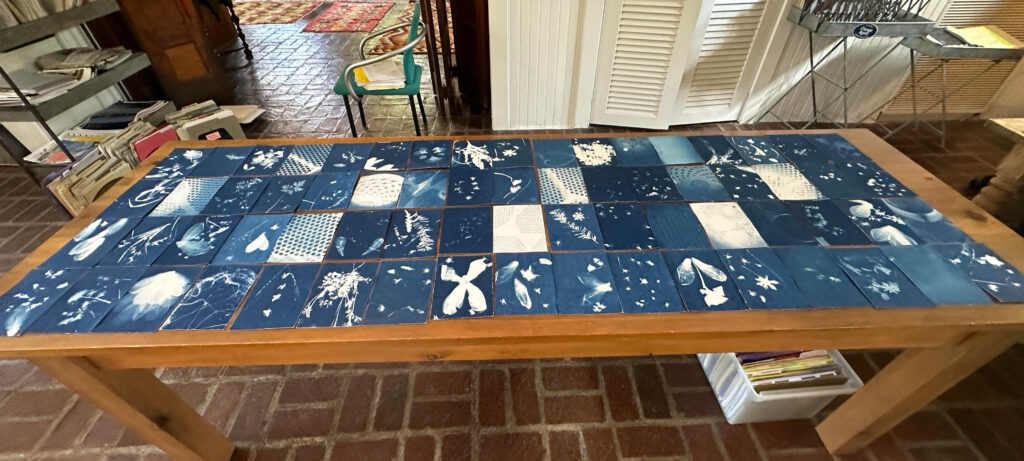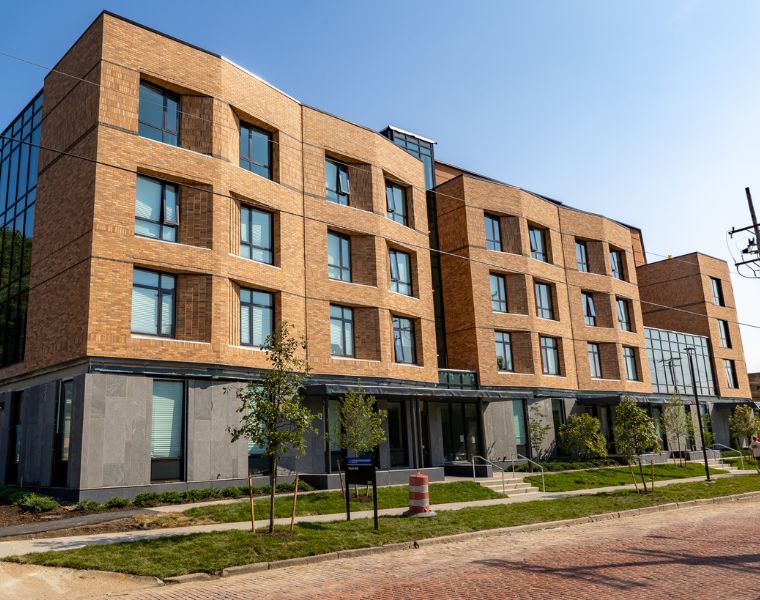Imagine living in a newly built residence hall with design features that your peers suggested—and art installations they helped create.
That’s exactly what dozens of second-year Case Western Reserve students are experiencing this academic year in the South Residential Village. The two buildings they’re calling home debuted this month as the university’s newest student housing options.
“I am obsessed with the design—I love how everything is modern and clean,” said Paxton Sandoval, a second-year student studying biochemistry. “For example, the seating (couches and chairs) has appealing designs and the colors are so fresh. I am also a sucker for big windows and natural light, which this dorm building prioritizes.”
Sandoval is living in what’s known as the Mary Chilton Noyes House, which stands alongside the John Sykes Fayette House. Both are named for trailblazing alumni and were designed to redefine the very essence of student housing.
In addition to air-conditioned rooms and private bathrooms, the new living spaces feature on-floor laundry machines, extensive multi-purpose spaces and one on-site health clinic. The buildings share a large recreation lawn and wellness garden, and, by the year’s end, will feature large-scale customized printed graphics turned into wallpaper that will breathe added personality into the buildings while celebrating connections to campus life and history.
Students helped create the art in partnership with CWRU’s Putnam Art Committee, which came about in a variety of ways. Some joined artist Christine Mauersberger during April’s total solar eclipse to create cyanotype prints of campus plants; others offered small objects from everyday life for a time-capsule mural created by artist Amber Kempthorn, an assistant professor at Cleveland Institute of Art.

The two houses, along with the existing South Residential Village residence halls, bring together second-year students in one area and provide 600 new beds to accommodate CWRU’s growing enrollment.
The buildings were designed by William Rawn Associates and pay tribute to inspiring achievements: John Sykes Fayette was the first known African American graduate of Western Reserve College, earning a bachelor’s degree in 1836 and a graduate degree in 1837; Mary Chilton Noyes was the first woman to earn a PhD from Western Reserve University, receiving the degree in physics in 1895.
“By providing modern amenities, we create a comfortable and supportive living environment that encourages students to engage with their peers and the broader campus community,” said Vern Rogers, executive director of University Housing. “These improvements not only enhance day-to-day living, but foster a sense of belonging and community, which I believe are crucial for academic and personal growth.”











